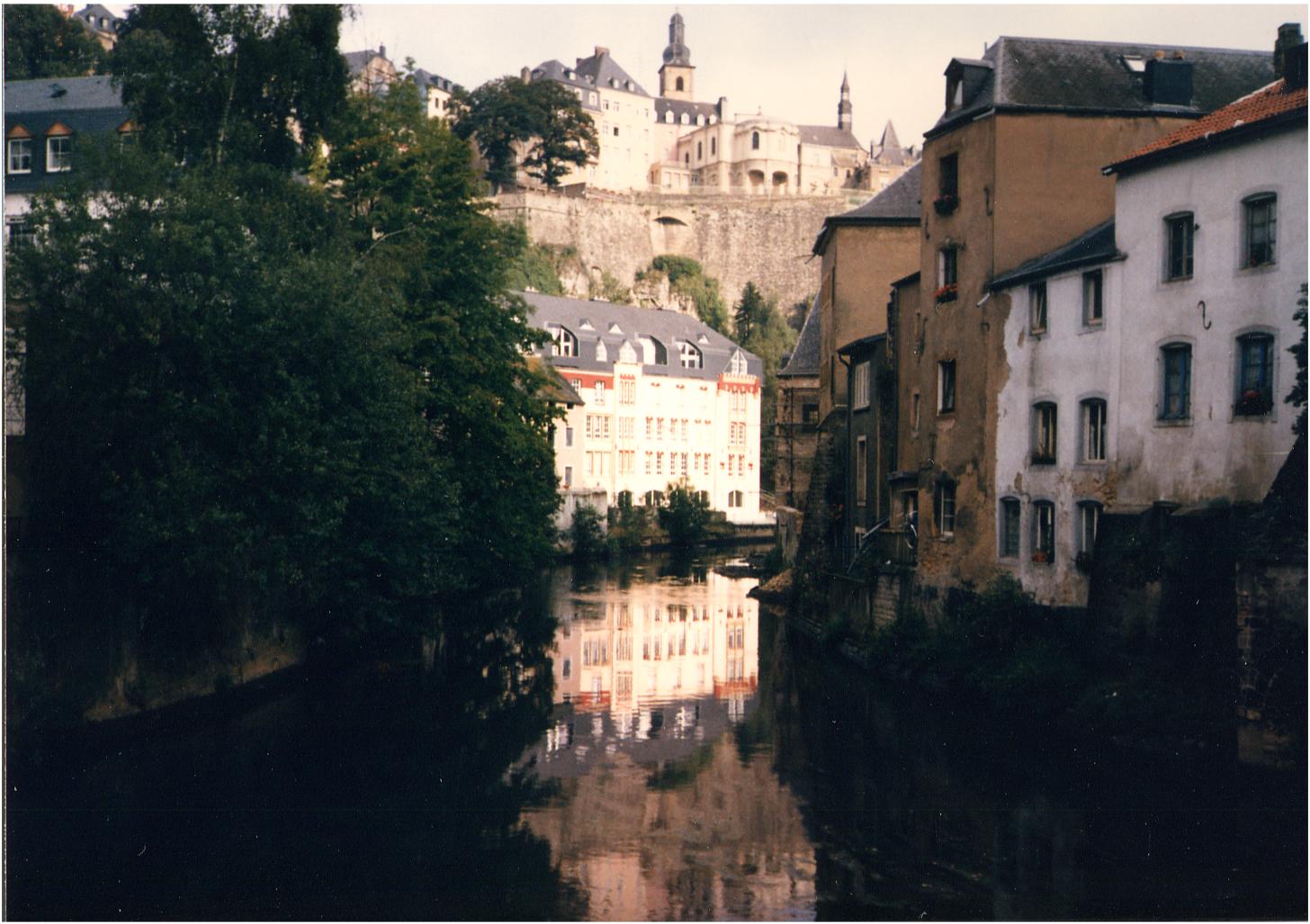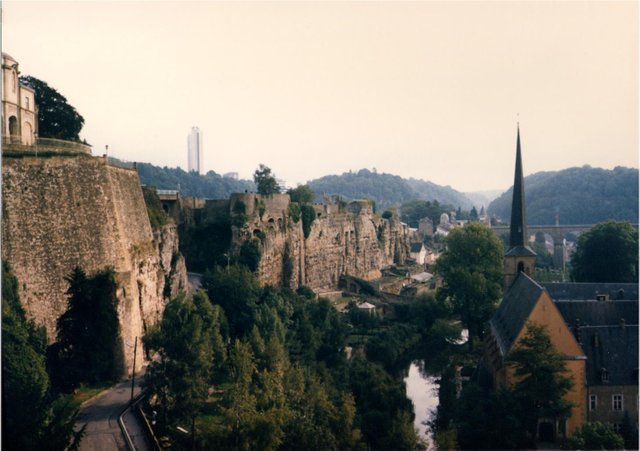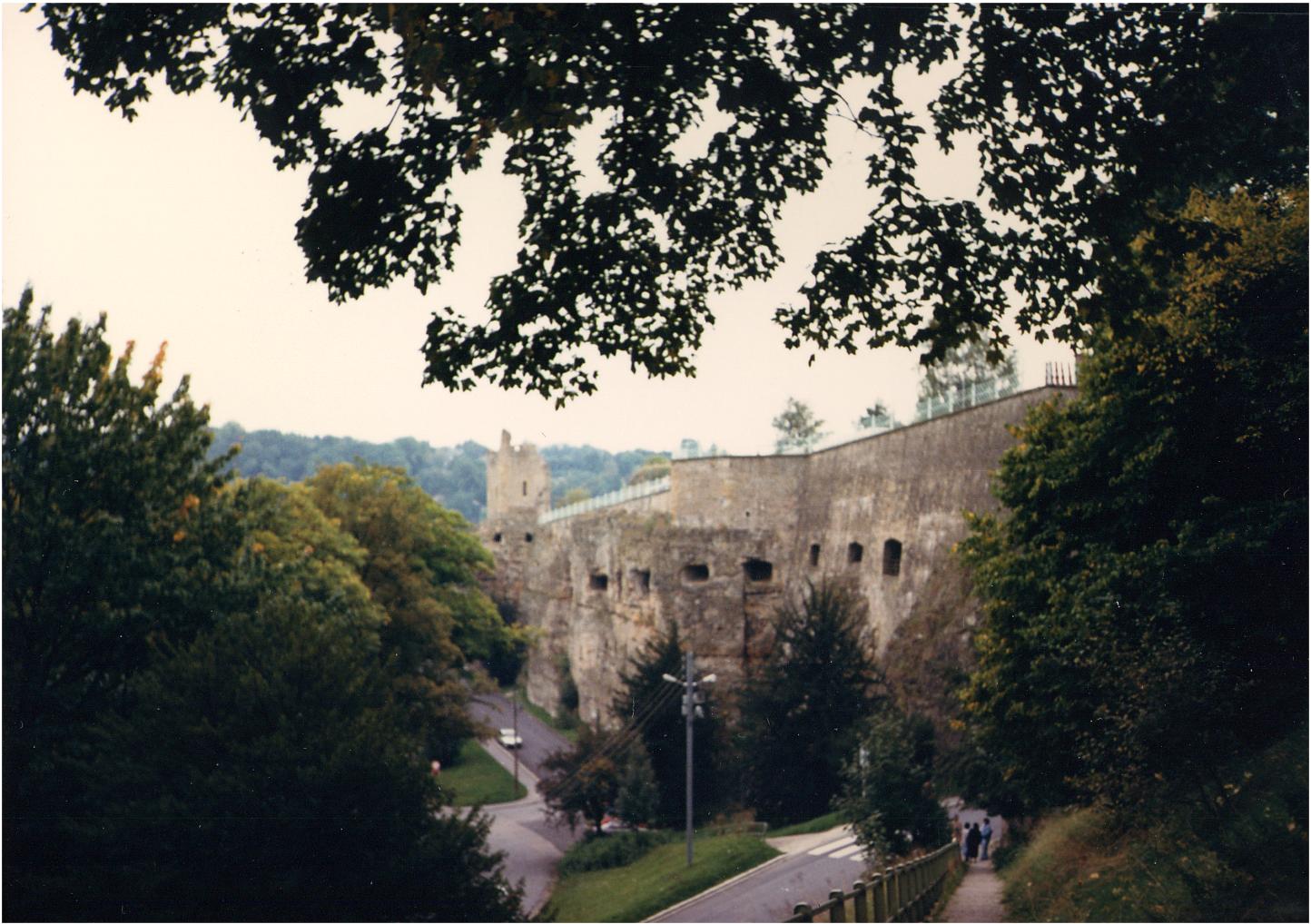The Heart of Europe - Day 43 - Daily Haiku

The Heart of Europe
Luxembourg, its city walls,
Embraced me fully
Cori MacNaughton
I felt immediately at home in Luxembourg, upon arrival from Florida, which I had not expected, particularly as I speak none of the three official languages of this tiny but vital country.
My apartment was in Limpertsbierg, an older section of town overlooking the Alzette valley, which was an easy walk to the city center, the library where I did much of my research, and Alte Stadt, or the Old Town, my favorite area.
Remnants of Fortress Luxembourg were everywhere. Prior to declaring itself politically neutral, and dismantling most of the extensive fortifications erected by its long series of occupying forces,, it was known throughout the western world as the Gibraltar of the North.
A small red sentry tower stood guard over the block where I lived, probably built by the Spanish, as they built dozens of small round sentry towers during their occupation.
Close by was a tall, monolithic stone tower, a symbol of Limpertsbierg, once used by lookouts and sharp shooters to defend their homes and families from invading forces.
Old Town was once entirely surrounded by high stone walls, and connecting fortifications, many of which still exist today, although ninety percent were intentionally destroyed. It was this walled section of the Old Town with which I first fell in love, with its narrow, cobbled streets, vibrant market squares and air of antiquity.

The Bock is the ruins of a tenth century castle, built by Count Siegfried in 963, which served to found Luxembourg, and now serves as the official entrance to the Casemates, a series of tunnels carved over the centuries into the granite beneath the city. Although destroying the Casemates was considered, it was ultimately decided that they could not do so without destroying much of the city itself, so the majority were simply sealed off with gates.

By the time of my visit, in 1988, over 17 km of tunnels were still intact, though many had been privatized by the landholders living above them for their own purposes. The Bock was built to take full advantage of the Casemates below it, and in the openings in the hillside below, cannon were added In later centuries, making invasions an increasingly costly endeavor, both in terms of necessary armaments and of lives lost in the process.
I was jolted awake, on the morning of June 23rd, by the unmistakable sound of cannon fire; Luxembourg National Day had begun. I can only imagine what it must have been like for the residents when the cannon were being used in battle.
Excavations of the Casemates were begun by the Romans, primarily to store the fine wines produced in the area, as Trier, Germany's oldest city, which was founded by the emperor Caesar Augustus as his summer palace, was relatively close at hand, and what is now Luxembourg was Roman held territory. Excellent wines are still produced in this region.
These royal wine cellars, and their extensive additions in later centuries, ultimately formed the backbone of the fortifications that were to become Fortress Luxembourg, as literally thousands of soldiers and their horses could be housed within. In their heyday, the Casemates housed bakeries, stables and all the businesses that were required to keep the army mobile and ready for battle.
When Luxembourg was shelled, in both world wars, thousands of people took refuge in the Casemates, and were thus spared from harm.